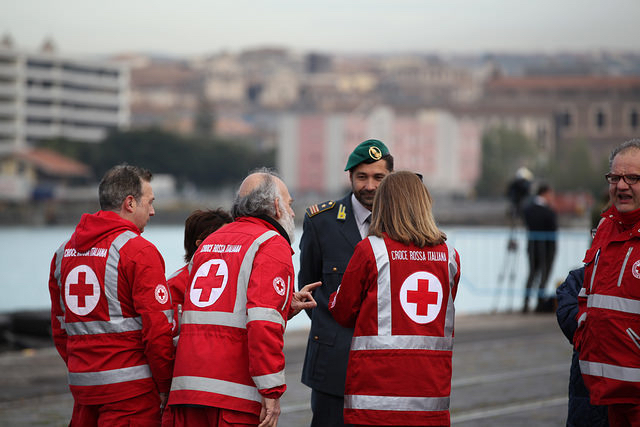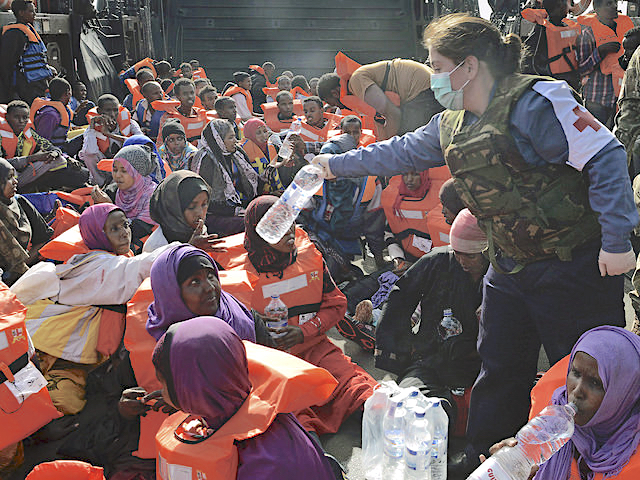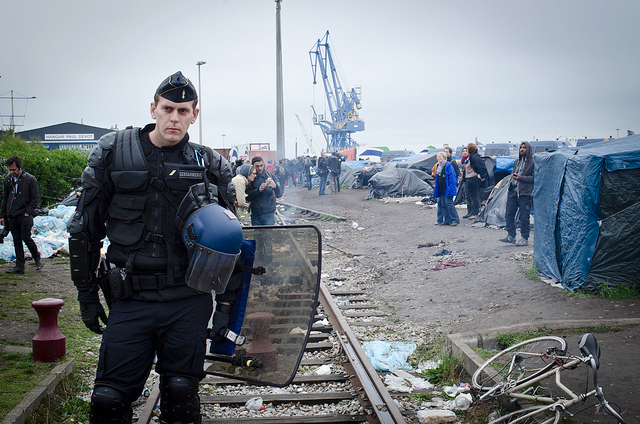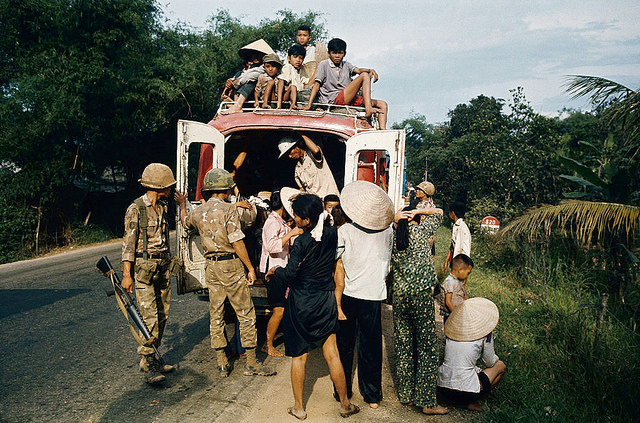Thousands of pilots of migrant boats have been jailed in Italy. Ilaria Sesana takes a closer look at their stories and finds prosecutions that criminalize escaping migrants amid a growing campaign to change the courts’ approach to the “scafisti.”
PALERMO, Italy – Yusuf does not deny driving the dinghy that brought him to Italy: “Yes, I was the one who drove the boat. Around me there were children crying and women screaming in fear. The dinghy we were on lost control and suddenly started spinning around. What else could I do? We all could have died that day.”
Speaking in Palermo, the Sicilian city where he has been since he arrived, he adds an important qualifier: “I wasn’t the captain.”
Born in Senegal, the 23-year-old left his native country to seek job opportunities and a future in Europe. Soon after reaching Libya, he found himself held captive by a group of traffickers. It took him several months to gather the 1,000 Libyan dinars ($726) necessary to pay off his captors and sail for Italy. On the night of July 27, 2016, he was taken to a beach together with hundreds of other people.
“There were so many of us, scattered around little boats. Two Libyans armed with rifles and [in] great haste started threatening us and beating us up, so that we could embark as quickly as possible,” he says. “On my dinghy alone, there were 129 of us but there was no captain in sight.”
For the first stretch of the journey, an armed Libyan man took the helm. “Suddenly the boat came to a halt, after which the Libyan left the tiller in the hands of another passenger, telling him, ‘Now it’s your turn to drive.’”
This improvised captain – a migrant just like everyone else aboard – had no idea what to do. The overloaded dinghy started spinning uncontrollably and taking on water. Yusuf stepped in and found himself at the helm until the dinghy was found by the Italian coastguard nearly two days after setting sail.
Upon disembarking, Yusuf was identified by fellow passengers as one of the scafisti, the Italian term for smugglers who pilot boats, and was arrested.
Following shipwrecks and mass drownings in April 2015, the European Union launched the Naval Force Mediterranean (EUNAVFOR Med), also known as Operation Sophia, with the objective of neutralizing people-smuggling gangs in the Mediterranean. The mission included intelligence gathering, the destruction of smugglers’ boats and dinghies and the arrest of scafisti.
Between August 2015 and the end of July 2016, a total of 793 scafisti were arrested, according to Italy’s interior ministry. This is on top of the 1,511 arrested since 2013. Arresting migrant pilots has been central to the approach of the Italian government, with then prime minister Matteo Renzi boasting on Twitter in April 2015: “We have arrested 976 scafisti and rescued thousands of people.”
While Italy’s popular press paints them as ruthless criminals, the reality of the scafisti is more nuanced. Stories like that of Yusuf are common.
“In the last year alone, we’ve met at least 20 young men who found themselves in the same situation as Yusuf,” explains Fausto Melluso, head of the activist group Arci Porco Rosso in Palermo. Many accused scafisti spend long periods in jail on remand before being acquitted. Melluso’s organization seeks to help them gain the right to remain in Italy when they would otherwise face deportation. “Ours is a small association, and there is little doubt that this is a widespread issue,” he says.
“Over the years, the scafisti have gone through a morphing process,” explains Salvatore Vella, from the Public Prosecutor’s Office in the city of Agrigento.
“In the past, they were members of organized crime syndicates, expert sailors capable of navigating the Sicilian Channel’s waters who had to be able to reach their destination undetected, help the passengers disembark and safely return home.”
Today, though, the scafisti are different, says Vella. They are typically improvised sailors recruited on the spot shortly before the dinghies’ departure and given two main tasks: the “captain,” who takes the helm, and the “compass-man,” whose task is to follow the route indicated by the GPS device. These “disposable” scafisti, Vella says, are exactly like the cheap dinghies they end up piloting.
“We continue to liken them to dangerous criminals but in reality these are desperate people who accept these roles for a few thousand euro. Or they might even be migrants who are offered a free trip for their trouble,” Vella explains. “They’re sent out after only a few days of training. And while the people we end up arresting in Italy are small fry, the bigwigs responsible for human trafficking remain in Libya.”
The gangs he references are the real business people in the web of human trafficking and people smuggling in Libya. Mainly concentrated in the Tripolitania region around the Libyan capital, they are part of well-structured armed militias.
Before he embarked for Italy, Mohamed, a young Senegalese man, had never seen the sea.
A few days before his departure from Zuwara in western Libya, Mohamed was picked up by the Libyan trafficker whom he had paid $1,000 for the journey. “He asked me if I could read and write. I answered yes. He then showed me a GPS device and explained to me how it worked. I tried to back out of the entire deal, because I didn’t want any part of it. Then he pulled a gun and told me, ‘You’re going to do it. If you don’t do what I say, I’m going to shoot you.’”
“I was scared, but the Libyan’s men put me on that dinghy and once again threatened to shoot me,” Mohamed explains. “I wanted to get rid of the GPS device, but at that point it was too late. If I had done it, I would have sentenced everyone to death. So I decided to obey.”
Mohamed was rescued, only to be arrested by Italian police on charges of aiding illegal immigration. It was only thanks to his defense attorney’s tenacity that he was able to prove his innocence and regain his freedom. But that was after spending more than six months in detention.
Gigi Omar Modica is among a handful of Italian judges who in recent months have acquitted scafisti. “It’s a case-by-case situation,” he says. “But more often than not, the people who end up in our courts aren’t those who organized the trip, chose the vessel or decided how many people had to embark on it.”
A line must be drawn, the judge argues, between traffickers and scafisti. “You can’t eradicate this human trafficking phenomenon by jailing people so far down the pecking order. I believe it’s grossly unfair to make scapegoats out of these people. The real traffickers are in Libya, and it’s there we should look, if possible.”
The manner of the arrests in scafisti cases is also important. They take place when the boats disembark, usually amid chaotic scenes that are made worse by the lack of reliable interpreters.
“The information gathered by the police at the time of migrant landings [is] of a rather succinct nature,” explains attorney Serena Romano of the Legal Clinic for Human Rights at the University of Palermo. “Only a few witnesses’ testimonies are heard and at most the questions boil down to who was driving the dinghy and who handled GPS duties.”
In this situation the accused scafisti often find their court-appointed lawyers are their worst enemies. The rights group Borderline Sicilia found the quality of the defense team was “ill suited for such a specialized and technical legal defense.”
This kind of defense makes for quick cases, guilty pleas and shorter sentences but it can also railroad individuals whose stories are more complex than this approach allows for. Romano says the current approach to these cases must change: “Without asking the right questions or encouraging the witnesses to elaborate on the facts, all the constraints and threats they were subjected to will never emerge in front of the judge.”
This article originally appeared on Refugees Deeply, and you can find the original here. For important news about displacement and forced migration, you can sign up to the Refugees Deeply email list. Photograph courtesy of the International Federation of Red Cross and Red Crescent Societies. Published under a Creative Commons license.
Some names in this story have been changed to protect the identities of the subjects.





